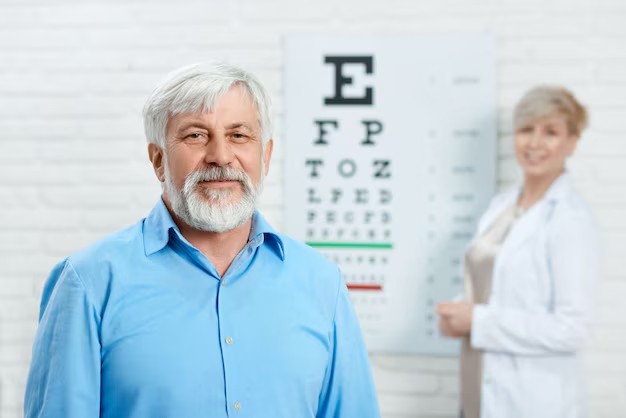Understanding Diabetic Retinopathy: What You Need to Know
Living with diabetes can be complex, and managing its numerous potential complications is a significant part of the journey. Among these, diabetic retinopathy stands out as a major concern, especially given its association with potential vision loss. With diabetes on the rise globally, understanding this eye-related complication is crucial for both patients and those who support them.
What is Diabetic Retinopathy?
Diabetic retinopathy is an eye condition affecting individuals with diabetes, characterized by damage to the blood vessels in the retina. The retina is the light-sensitive tissue at the back of the eye, critical for vision. Over time, high blood sugar levels can lead to the weakening of these vessels, causing them to leak fluid or blood, which can significantly impair vision.
Early Stages: Non-Proliferative Diabetic Retinopathy (NPDR)
In its initial phase, the condition is often asymptomatic and is termed Non-Proliferative Diabetic Retinopathy (NPDR). During this stage, the retinal blood vessels swell and develop microaneurysms, which are small balloon-like swellings. Although vision may not be affected, regular eye exams are crucial as they can detect these early changes.
Advanced Stage: Proliferative Diabetic Retinopathy (PDR)
As the condition progresses, it can advance to Proliferative Diabetic Retinopathy (PDR). This stage is marked by the growth of new, abnormal blood vessels on the retina. This neovascularization can lead to serious complications, such as retinal detachment or hemorrhages, which can cause vision loss.
Symptoms and Warning Signs
Diabetic retinopathy can often progress unnoticed, as symptoms might not manifest until significant damage has occurred. However, some people may experience:
- Blurred vision: A common early sign indicating possible fluid leakage.
- Fluctuating vision: Variations in vision clarity, often affected by blood sugar levels.
- Dark spots or floaters: Dots in the field of vision caused by bleeding vessels.
- Poor night vision: Difficulty seeing in low-light conditions.
- Colors appearing washed out: Colors may seem faded or less vibrant.
Risk Factors to Watch
Not everyone with diabetes will develop retinopathy, but certain factors can increase the risk:
- Duration of Diabetes: The longer you have diabetes, the higher the risk of developing eye complications.
- Poor Blood Sugar Control: Consistently high blood sugar levels contribute to retinopathy.
- High Blood Pressure and Cholesterol: These can exacerbate eye damage.
- Pregnancy: Can accelerate the progression of diabetic retinopathy in women with pre-existing diabetes.
- Smoking: Linked to various diabetic complications, including retinopathy.
Eye Exams: The Cornerstone of Prevention
Routine eye examinations are vital for the early detection and management of diabetic retinopathy. Typically, it is recommended to have:
- Annual Eye Exams: Regular comprehensive eye exams can help detect retinopathy before symptoms appear.
- Dilated Eye Exam: Allows eye professionals to assess the retina and check for signs of retinal damage.
- Optical Coherence Tomography (OCT): A non-invasive test that provides cross-sectional images of the retina, helping in the detailed examination of retinal structure.
By catching any changes early, one can manage and possibly slow the progression of the condition.
Managing and Monitoring Diabetes
An essential part of preventing and managing diabetic retinopathy involves effective diabetes management. Here are some strategies:
- Maintain Blood Sugar Levels: Regular monitoring can help manage blood sugar, which reduces the risk of retinopathy.
- Monitor Blood Pressure and Cholesterol: Keeping these in check can help safeguard retinal health.
- Adopt a Healthy Lifestyle: A balanced diet, regular exercise, and avoiding smoking can protect against diabetic complications.
Keys to Managing Diabetic Retinopathy
- 🎯 Consistent Monitoring: Keep track of blood sugar, blood pressure, and cholesterol levels.
- 🥗 Healthy Diet: Focus on balanced nutrition to support systemic and eye health.
- 🚶♂️ Regular Exercise: Aim for moderate physical activity to maintain overall health.
- 🚭 Avoid Smoking: Reducing or eliminating smoking lowers many diabetes-related risks.
Treatment Options
While there is no complete cure for diabetic retinopathy, various treatment options can slow its progression and prevent further vision damage:
Laser Treatment
Laser photocoagulation is a common procedure used to treat proliferative diabetic retinopathy. It seals leaky blood vessels and reduces swelling, helping to prevent further vision loss.
Anti-VEGF Injections
Anti-vascular endothelial growth factor (anti-VEGF) injections target the abnormal blood vessels, reducing swelling and improving vision. They are a significant advancement in the treatment of diabetic retinal diseases.
Vitrectomy
In more severe cases, a vitrectomy may be required. This surgical procedure removes blood from the vitreous, the clear gel between the lens and retina, and repairs retinal detachment.
Lifestyle Impacts and Emotional Well-being
Managing a chronic condition like diabetic retinopathy can be overwhelming. It's essential to support emotional health alongside physical health.
Coping Strategies
- Seek Support: Engage with support groups or professional counseling to manage stress.
- Stay Informed: Understanding the condition helps in making informed decisions.
- Engage in Hobbies: Participate in activities that bring joy and reduce stress levels.
Conclusion: Taking Charge of Your Eye Health
Diabetic retinopathy underscores the intricate relationship between diabetes management and eye health. By understanding the risk factors, symptoms, and preventive measures, individuals can take proactive steps to protect their vision. Regular eye exams, effective diabetes management, and a healthy lifestyle are cornerstones in reducing the risk and impact of this condition. Ultimately, staying informed and vigilant empowers those affected to maintain their quality of life and preserve their vision.
By comprehensively addressing various aspects of diabetic retinopathy, this guide aims to provide both clarity and actionable insights, thereby empowering readers to take charge of their health proactively.
